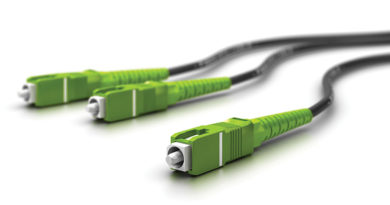A Certified Fiber Optics Workforce 2020
In my recent Broadband Library articles, we have discussed technologies that leverage optics, all starting to appear in our industry. In fact, a few of these technologies are here today for some operators! The industry is aligned, in that optical fiber is essential for the delivery cable services today, tomorrow and the 10G platforms near-term to our customers. Optical fiber offers low latency and blazing fast communications in our HFC networks. In fiber deep and optical distribution networks (ODN) with passive technologies (e.g., xPON/FTTx), fiber improves reliability, by reducing active devices. A distributed access architecture (DAA) with converged cable access platforms (CCAP) provides operators dense multiplexed digital fiber and a toolkit to virtualize the PHY layer and MAC layer of our networks. Finally, with much discussion at SCTE·ISBE Cable-Tec Expo 2019, DOCSIS 4.0 is approaching with full duplex (FDX) and extended spectrum DOCSIS (ESD) to 1.8 GHz for our networks. With each of these technologies arises a necessity for new workforce skills in engineering, operations and construction teams. Is your organization ready to support the architectures and technologies of 2020 and beyond?
In a recent SCTE·ISBE, Light Reading, and Viavi panel at Expo 2019, we presented results from a service provider and contractor survey. Fiber optics is a growing solution that numerous organizations are now required to support. In addition, these organizations are similarly required to uphold well-versed skills in HFC (e.g., coaxial splicing), wireless and Wi-Fi.
As a professional technician, engineer or as an executive of an organization that desires to work with new fiber optic technologies and grow workforce competencies to make the right decisions, it will be critical for organizations to comprehend optics moving forward. As an international business partner, the SCTE·ISBE is collaborating to keep our partners prepared for the latest trends in HFC, 10G, xPON, fiber deep, DAA and DOCSIS 4.0 through our extensive library of resources. In addition to our resources like standards and chapters, the SCTE·ISBE has a vast array of training and certification courses delivered from a one-of-a-kind industry platform.
How do you know when it is time to invest in your career? Well, here are a few questions you may ask yourself as part of a self-awareness model.
• Is the confidence level of the employees declining?
• Is there an increase in truck rolls with service calls? Service calls on installs?
• With all the technologies in the network, is the workforce able to compare/contrast technologies, understanding the advantages or convey their disadvantages?
• Are you or your employees able to explain how an ODN works?
• Are your co-workers, with less seniority and experience, now your supervisors? Or are your co-workers rarely asking you for assistance anymore?
• Is your organization being passed over as your workforce lacks the required fiber skillset and professional industry credentials (e.g., SCTE·ISBE Industry Standard) to operate effectively?
• As an individual, are you no longer familiar with the latest optical testing equipment and the latest installation methods?
If you answered “yes” to any of these questions, it is time to invest in the optical skills, knowledge and abilities (competencies) for yourself and/or your workforce. What exactly is the best program or curriculum to pursue for a career minded individual or for improving workforce efficiency? Well, before we answer this, there are a few key factors to consider in a learning and development (L&D) program that offers a comprehensive industry professional certification.
To start, look for a business partner who has thousands of connections in your industry, as well as a global view of a technology.
A credible business partner with such connections possesses the experience to strategically construct a comprehensive curriculum with industry stakeholders in a collaborative relationship. Curriculums are based on current job roles, specific job tasks, required practical behaviors, future technologies and most importantly the insight of your business partner. Forward thinking business partners design robust curriculums based on their active role driving industry specifications (e.g., CableLabs, IEEE, and ITU), developing emerging industry standards (e.g., RFoG), deploying industry operational and best practices (e.g., home Wi-Fi deployment), and is a practice leader working with industry leadership to solve real-world challenges. In addition, to continually advance workforce competencies and improve employee retention, an agile data driven learning journey curriculum must be established that evolves with industry best practices and industry standards. Finally, programs are architected with the latest science in adult learning behaviors that not only drives business results but delivers a return on investment in L&D.
In the world of professional certification, there are thousands of certificate and certification programs available to telecom and IT professionals. However, despite the many varieties, most are not aligned with current thinking in the telecom industry. When certifying workforce skills there are key elements of a non-profit certification body. Features in a well vetted certification program are:
• A certification is a detached vendor-neutral assessment that evaluates predetermined industry standards and best practices for achieving desired skills, knowledge and abilities (SKAs) in an individual. A certification program follows a rigorous development process and is psychometrically sound.
o A certification is used by employers to measure, drive competencies and improve performance to a level of expertise.
o Certifications are not designed to teach. However, they do provide imperative data for teachable moments and identifies competency gaps.
• A certification program must contain a clear set of program goals, objectives, society bylaws, and standards developed by a body of experts within the industry you operate (e.g., telecom). A certification program builds an entire career ecosystem.
• A certification is not an end of course certificate, nor is a certification awarded after completing a set course in a curriculum. Certifications are designed to measure SKAs.
• Many of the credible certification organizations in the market are non-profits reinvesting into the latest L&D tools and assets to drive business results. A certification program is administered through a set of L&D and certification committees of industry subject matter experts (SMEs).
• Professional certification programs offer credits (recertification units) to maintain and renew a certification to industry standards on a three- to five-year basis. In addition, the certification is aligned to industry approved curriculum.
In the area of fiber optics there are a few certification options available to telecom professionals. However, there is one organization that is architecting professional certifications and curriculums with all the above key elements. The SCTE·ISBE is a society operating in and dedicated to the telecom industry, with a unique approach to education. Feel confident as a professional that you are learning the required SKAs of the industry, while maximizing your potential in your career. For 50 years, the SCTE·ISBE has been leading in architecting telecom curriculum, member resources, chapter events, and standards and/or professional certifications to the ongoing requirements of operations and engineering. Special attention has been paid to incorporate real-world SKAs into our educational platform (VirtuLearn®).
To efficiently invest in yourself or in your workforce, the figure below depicts the SCTE·ISBE associated optical certification exams and how they include the competencies of other programs in the market place like the ETA FOI and FOA CFOT competencies.
The SCTE·ISBE has designed its program to be the most comprehensive single solution fiber program in the market place. An individual who completes the SCTE·ISBE Broadband Fiber Installer (BFI) course is prepared to take the telecommunication industry recognized exam BFI, in addition several additional assessments by other organizations. The Broadband Transport Specialist (BTS), recently updated with new industry best practices, prepares the workforce for several certification assessments as well. Both the BFI and BTS offer a variety of education delivery models which includes online, and onsite practical instructor led, as well as hybrid models. In addition, customized enterprise licensing curriculum is available making it easier than ever to prepare for 2020 and beyond.
One thing is clear, the abundance of transformations in the telecom network will require individuals and operators to advance their SKAs. An emerging requirement for many operators will be finding and retaining new talent. In the recent SCTE·ISBE L&D ROI white paper, we mention that folks identified training and development (i.e., certification) opportunities as a key factor for remaining with an employer. As you think about the future of your career or the career of others, be sure to invest in yourself and/or your workforce, along with completing a few professional certifications along the way!

Figure 1. Optical networks

Figure 2. SCTE·ISBE offers a complete program, including all ETA FOI and FOA CFOT competencies
 Steven Harris
Steven Harris
Senior Director, Advanced Network Technology and Instruction, Learning and Development, SCTE•ISBE
Steve Harris is the Executive Director of Technical Education and Sales at SCTE·ISBE. He is a respected international telecommunications subject matter expert, sought-after presenter, and principle instructor. He responsible for the tremendous growth of SCTE·ISBE training curriculum, learning paths and certifications for 100,000+ telecommunication professionals. He also has responsibility for the client partnerships for the SCTE·ISBE Corporate Alliance Program (CAP) MSOs and vendors community.


